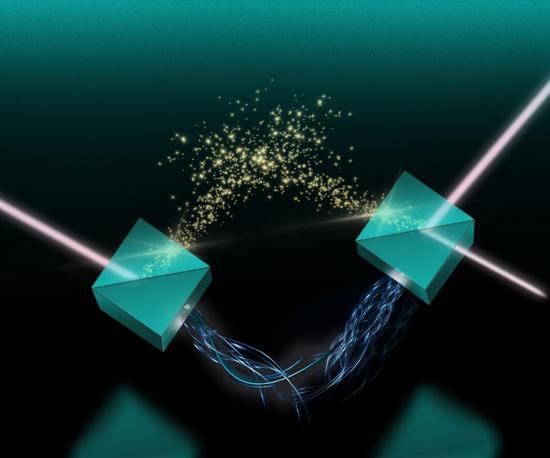Wave and particle are two fundamental properties of nature. The debate of whether light is a wave or a particle is an ancient problem. For examples, Newton regarded that light is a particle, while Huygens, Thomas Young, Maxwell, etc. believed that light is a wave. After the appearance of quantum theory, people came to realize that light can be a contradictory quantum entity, namely, it can be either a wave or a particle, depending upon the circumstances of the experiments. Such a surprising phenomenon is well-known as the principle of wave-particle duality for light.
In 1923, the French physicist Louis de Broglie boldly generalized the wave–particle duality from light to any other matters, and this talented idea has thoroughly changed our viewpoint to the physical world, and meanwhile stimulated the establishment of the fundamental equation in quantum mechanics, i.e., Schrödinger's equation.
Nowadays, the wave–particle duality has been deeply rooted in people's hearts. It has led to a common-sense perception that wave property and particle property coexist simultaneously in a quantum entity. The wave-particle duality seems to tell us that these two physical attributes are mutually bound together, thus cannot be dismantled in a quantum object.
This gives rise to a fundamental question: Can one completely separate the wave and particle properties for a single photon, thus successfully dismantling the wave–particle duality?
In order to answer this question, P. Chowdhury from Indian Institute of Technology Guwahati, Prof. A. K. Pati from Harish-Chandra Research Institute, and Prof. Jing-Ling Chen from Nankai University, China, have proposed a thought experiment to demonstrate that the wave and particle properties can be spatially separated in a single photon. This significant result was published as a cover in Photonics Research, Vol. 9, Issue 7, 2021 (Pratyusha Chowdhury, Arun Kumar Pati, Jing-Ling Chen. Wave and particle properties can be spatially separated in a quantum entity. Photonics Research, 2021, 9 (7): 1379-1383).
To show such a separation, the team started with the wave-particle box that can generate a wave-particle superposition state of a single photon. Then the team designed an experimental setup based on a similar technology of quantum Chesire cat--a quantum paradox for which a cat (i.e., quantum object) and its grin (i.e., physical property) can be spatially separated.
The proposed setup includes a modified Mach-Zehnder interferometer, one may calculate various weak values for suitable observables by choosing the pre- and post-selected states. As a result, the team found that the particle property of light is zero in the left arm of the interferometer, whereas the wave property is zero in the right arm, thus realizing the separation of the wave and the particle properties in the modified Mach-Zehnder interferometer.
Furthermore, the team found that, although the wave-particle duality was broken, the complementarity principle still holds under the wave-particle separation. The result may find potential applications in quantum foundations and quantum communications.
Prof. Jing-Ling Chen believes that dismantling the wave–particle duality is an important contribution for quantum foundations, and it will stimulate some new experimental investigations. For instances, it would be interesting to find out if the interference fringes on the screen vanish when one adopts the lights with solely particle property to perform the Young-type double-slit experiments, and also if the electron diffraction effects disappear when one adopts the electrons with solely particle property to perform the corresponding experiments.
Prof. A. K. Pati believes that an interesting proposal can be carried out in the follow-up work. For a quantum Cheshire cat, it implies a bipartite separation between quantum object and one of its physical properties. For dismantling the wave–particle duality, it indicates a bipartite separation between two physical properties in a quantum object.
By combining quantum Cheshire cat and the dismantlement of the wave–particle duality, one may consequently consider a tri-separation, i.e., the separation among the quantum object itself, the wave property, and the particle property. Once such a separation is achieved, then one will obtain a quantum Cheshire "Super Cat."

Dismantling the wave-particle duality.


